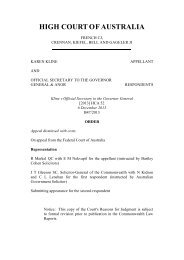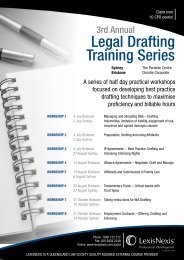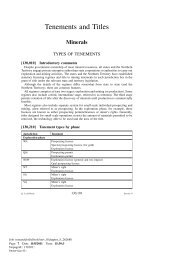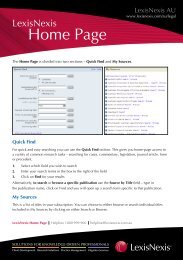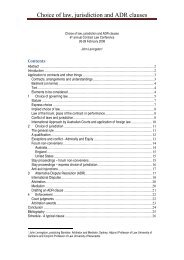Harassment and bullying policy - LexisNexis
Harassment and bullying policy - LexisNexis
Harassment and bullying policy - LexisNexis
Create successful ePaper yourself
Turn your PDF publications into a flip-book with our unique Google optimized e-Paper software.
<strong>Harassment</strong> <strong>and</strong> <strong>bullying</strong> <strong>policy</strong>The Company is committed to providing a workplace free of all forms of harassment <strong>and</strong> <strong>bullying</strong>, asprescribed by Commonwealth <strong>and</strong> state legislation. It is an employee's right to be treated with dignity<strong>and</strong> respect <strong>and</strong> it is also the employee's responsibility to treat others the same way.The Company is committed to meeting its legislative obligations relating to harassment <strong>and</strong> <strong>bullying</strong>,<strong>and</strong> shall take all reasonable, practicable steps to provide <strong>and</strong> maintain a working environment freefrom these behaviours.An internal grievance resolution process assists employees to raise issues of concern <strong>and</strong> allcomplaints will be treated confidentially, seriously <strong>and</strong> sympathetically. No employee shall bepenalised or disadvantaged as a result of raising any genuine concern or complaint.This <strong>policy</strong> applies to all activities, <strong>and</strong> all those involved in those activities, including employees,contractors, customers <strong>and</strong> visitors, that take place on work premises <strong>and</strong> elsewhere where activitiesare undertaken in the course of employment, or at work-related activities, such as social functions.Relevant <strong>and</strong> appropriate disciplinary action will be taken against anyone found to have breached this<strong>policy</strong>.<strong>Harassment</strong><strong>Harassment</strong> is unwelcome behaviour which does, or is likely to, offend, humiliate or intimidate anotherperson. The fact that no offence was intended does not mean that harassment has not occurred. If thebehaviour has the effect of being offensive, humiliating or intimidating, that is usually enough.<strong>Harassment</strong> may occur as a single act, or as a series of incidents, persistent innuendos or threats. Itcan take many forms: it may be silent or loud, subtle or openly hostile, <strong>and</strong> it may be private or public.The following examples may constitute harassment in the workplace:• swearing in the workplace;• gossiping about a person;• making, circulating or displaying jokes containing inappropriate or offensive content;• intrusive enquiries into another person's personal life, including their religion, family orprivate matters;• constantly monitoring what someone else is doing, giving negative criticism or "nitpicking";• openly displaying pictures, posters, graffiti or written materials which might be offensive tosome; <strong>and</strong>/or• communications via phone, email or computer networks which are threatening, abusive oroffensive to employees.Sexual harassmentSexual harassment occurs when a person makes an unwelcome sexual advance or an unwelcomerequest for sexual favours, or engages in any other unwelcome conduct of a sexual nature in relationto another person.Sexual harassment may take various forms such as:• sexual advances <strong>and</strong> requests for sexual favours;• inappropriate physical contact or unnecessary familiarity;• offensive comments on physical appearance, dress or private life;• lewd jokes;<strong>LexisNexis</strong> Sample• public display of pornography in the workplace, including on the internet by email, or onmobile phones;1



